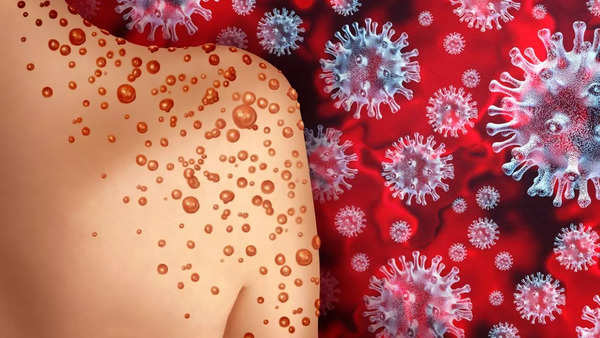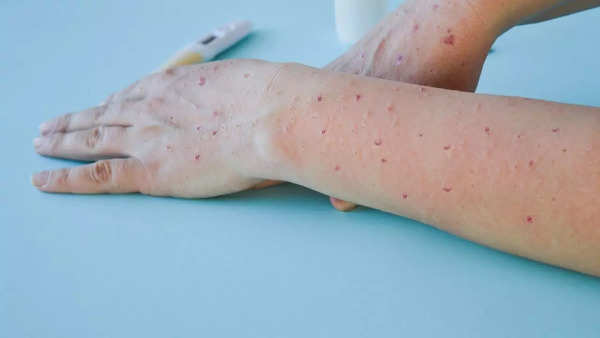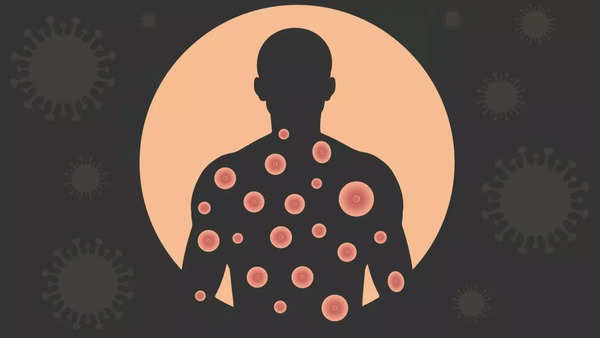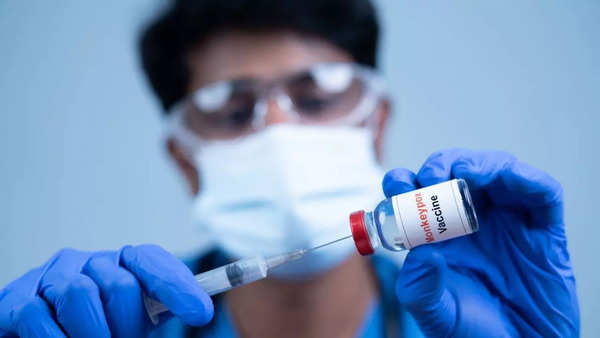The World Health Organization has declared the ongoing mpox outbreak in Africa a global health emergency, which is the highest level of alarm under international health law. Before that Africa Centres for Disease Control and Prevention had declared a public health emergency for the continent.
The last time mpox was declared a global health emergency was in the year 2022. There are two main strains of the virus, known as Clade I and Clade II. The 2022 outbreak was caused by clade II, which is endemic in West Africa. The WHO’s decision was made after mpox spread to a dozen other African countries, fearing the virus may wreak havoc globally.
The monkeypox virus was discovered in Denmark in the year 1958 in monkeys kept for research. The first human case of mpox was reported in the year 1970 in a nine-month-old boy in the Democratic Republic of the Congo.
Amid the growing mpox scare, experts worry about the virus becoming as deadly as Covid. Here’s everything you want to know about how it spreads.
What is mpox virus; know its main symptoms

Monkeypox, now named as mpox is a zoonotic disease caused by the Mpox virus, with early symptoms showing up as fever, chills and body aches. After a few days of onset of flu-like symptoms, a rash begins to develop. Beginning on the face, it spreads over the entire body – palms, soles and evolves over 2-4 weeks in stages – macules, papules, vesicles, pustules.
The disease is categorized into two distinct clades: clade I and clade II. Clade IB is currently behind the outbreak.
How mpox spreads
Animals to humans
Mpox can spread from animals to humans and humans to humans. The animal reservoirs are monkeys, squirrels, rats, and non-human primates. Infections spread from animals to humans through bites or scratches, close contact, or eating inadequate LFT-cooked food.
This contact is most often seen in individuals involved in hunting or handling animals in endemic regions. The pathogen enters through broken skin or mucous membranes. It’s important to take preventive measures, such as the use of protective gear and avoiding contact with potentially infected animals, to reduce the risk of zoonotic transmission.
Humans to humans

“The current epidemic is largely due to human-to-human transmission. The infection spreads through respiratory droplets, contaminated fomites and direct contact. The role of sexual transmission is unknown but the skin and mucosal contact during sex facilitates spread. Infection can spread from the pregnant mother to the fetus,” says Dr. Tanu Singhal Consultant, Paediatrics and Infectious Disease at Kokilaben Dhirubhai Ambani Hospital, Mumbai.
Mpox is primarily transmitted through three routes: direct contact with infected animals, close human contact, and exposure to contaminated secretions.
Direct contact with wild animals that have the virus, such as rats or primates, can result in transmission, especially through bites, scratches, or eating undercooked meat.
Human-to-human transmission happens when an infected person comes into close contact with another. This includes personal or sexual contact when the virus can be transmitted through body fluids, sores, or respiratory droplets. Contaminated objects, such as beds, clothing, or surfaces that have come into contact with the virus, represent an additional risk.
“Human-to-human transmission can occur through close contact, including intimate or sexual contact, with a person who has mpox. This includes touching, hugging, kissing, or sharing utensils and clothing. Additionally, mpox can spread through contact with contaminated materials, such as bedding, towels, or surfaces that have come into contact with the virus, says Dr Nasiruddin G, Consultant-Internal Medicine, Fortis Hospital, Cunningham Road.
Dr Laxman Jessani, Consultant Infectious Diseases Apollo Hospitals Navi Mumbai explains how mpox human-to-human transmission happens:

Intimate and sexual contact: The virus can be transmitted through skin-to-skin contact, including during intimate or sexual encounters with an infected individual. The presence of skin lesions or respiratory droplets from an infected person are significant sources of transmission.
Prolonged face-to-face interactions: Infected individuals can spread the virus through respiratory droplets during extended conversations or close physical proximity.
Contact with lesions: Direct contact with the vesicular or pustular skin lesions of an infected person can lead to transmission. This route is especially concerning in healthcare settings where patients may be in close contact with medical staff.
Clades of Mpox
Clade I: Found primarily in Central Africa
Severity: More severe disease with high fever, extensive rash, and systemic complications.
Mortality rate: Higher, up to 10% in unvaccinated populations, with risks of severe complications.
Outbreaks: Linked to direct contact with infected wildlife and less common human-to-human transmission in close-contact settings.
Clade II: Observed mainly in West Africa
Severity: Generally less severe with milder symptoms and fewer complications.
Mortality Rates: Lower, around 1-3%, but still significant in vulnerable populations.
Outbreaks: Associated with urban settings and international spread, often linked to travel and close contact.
Transmission routes of both clades
“Both clades spread through contact with infected animals, human-to-human interaction, and contaminated materials, though Clade I often affects rural settings and Clade II has shown broader international spread.
Clade I tends to be more severe with higher mortality, while Clade II is generally milder but has significant international impact. Understanding these differences is crucial for effective public health responses,” says Dr Jessani.
How to prevent mpox infection

Dr Urman Dhruv, MD (Internal medicine), HCG hospitals, Ahmedabad suggests tips to keep mpox infection at bay:
1. Get vaccinated: The JYNNEOS vaccine (not available in India at present) is recommended for prevention of mpox. Getting both doses provides the best protection. You should get two doses 4 weeks apart.
2. Avoiding contact with wild animals, especially in areas where mpox is endemic, is critical. To limit the danger of transmission, ensure that animal products are thoroughly cooked.
3. To prevent human-to-human transmission, avoid close contact with people who have mpox symptoms, practice proper hand cleanliness, and wear protective clothes or masks when caring for infected people.
4. Additionally, sanitizing potentially infected settings and items can help prevent the infection from spreading.
5. Wash your hands often with soap and water, or use an alcohol-based hand sanitizer, especially before eating or touching your face and after you use the bathroom.
“The reason for the monkeypox epidemic is declining immunity due to the cessation of smallpox vaccination (as smallpox vaccine partially protects against monkeypox) deforestation and encroachment of animal reserves, and risky and promiscuous sexual behaviour,” says Dr. Tanu Singhal Consultant, Paediatrics and Infectious Disease at Kokilaben Dhirubhai Ambani Hospital, Mumbai.
(Images courtesy: iStock)
Covid Done, New Virus Emerges: 100s Killed, WHO Declares Global Health Emergency | Mpox Explained

